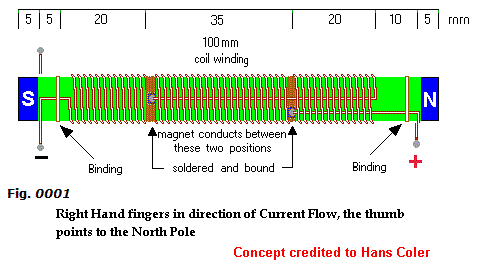
Intro to An Energizing World of Mysterious Charges
Copyright © 2008, E C Distributions
My hope is an introduction to a mysterious world of charges will inspire readers to reconsider that which most have never attempted, yet proclaim loudly such things are not only impossible, while assuring their listeners it is foolish to even try.
It is a daunting task to write a book, and preparing that book for publication is a whole other matter. Then performing those tasks with technical data which has been created from research spanning decades is an entirely new creature. Every new insight could either expand and expound a known concept, or challenge what was known and require a totally different alignment of a concept's operational interpretation to actually comprehend the processes. My Presentation (is on this Web Site and) includes pictures from the internet, many pictures I have created specifically for this Presentation, several graphs to present critical data, a number of screenshots from my Transient Phase Simulator, numerous screenshots from CircuitMaker's contributions, and at least ten of the animations I have carefully produced to allow visuals for how several circuits are functioning. I apologize for any errors. The petty will focus on the errors to distract from the profound concepts.
The few examples readers will see here may seem a bit strange. However, that strangeness will deepen as readers reflect on the central concept this site is dedicated to, as it defies that which the scientific world blindly, or otherwise sustains.
If only a low quality Voltmeter is employed to analyze a circuit’s events, the entire picture is somewhat obscured. Consider the proposition that you have the familiar meters and it is discovered that there is a particular event introducing a potential scenario for an unfamiliar Energy that is not acknowledged by traditional low quality Voltmeter.
Such concepts enter us into a realm where, even though the realm has been sustained by true scientists in experimentation, the realm is also ignored by those in science who are more devoted to position than truth.
Once an individual reads of another’s success in either finding an “unfamiliar Energy,” or witnesses an event which releases unexpected results that can consistently be replicated, that individual is at a new door, a threshold which is not authorized by science.
Welcome to a journey that sets you apart from the accumulated wisdom of the world and places you in a realm that reaches beyond what science is willing to accept.

I can
actually take my Fluke meter and touch the negative lead on a Magnet’s surface and, with the positive lead not quite touching the Magnet’s surface, I can find a “sweet spot” where there is a highest Voltage reading. This process has been done with several
types and shapes of Magnets.
In a
conversation this Web Site's Author had with Norm, one of John
Bedini's associates, he spoke of convincing a reluctant College
professor that there was Energy present
in a Magnetic Field simply from the perspective that when you placed
a Magnet on either a vertical or on the bottom side of a horizontal
piece of metal, the Magnet is actually overcoming gravity. It is a
simple process to weigh a Magnet and determine how much Energy
would be required to prevent a Magnet from falling to the ground. The
professor never liked Norm.
When
internal combustion engines began showing up in the late 1700s,
literal sparks began to fly. These types of engines became a primary
focus for mobility and engineering. By the early 19th century, a
variety of ignition systems had been developed, but few found
commercial success due to reliability issues... The
strange world we live in is even more bizarre if we think we have all
the technologies that could be useful to us. To
be told we are free by governing officials who seek control over
freedom is contrary to the human spirit. This
point of the Presentation brings the reader to where the focus of
this Web Page's Author begins. There
are, indeed,
things and information that could benefit us that have been /
will be suppressed.
Historical
Clarity Excerpt Creating an Efficient
and effective Electromagnetic Coil involves
characteristics of a very strange and dynamic creature. If
you set a Coil's standard as a Number of Turns, you
soon discover how the meticulous influences of Wire
AWG, Wire Length,
Core Dia, Core
Height, Core Length,
and the Number of Wires all form very
stable circumstances if the Wire Length is enough to maintain both
sufficient and reasonable amounts of Current. A Wire
Length that is either too long or too short may well
inhibit Efficiency with
too little or too much Current. Even a Wire
Length which falls within Efficient
specs may be tweaked a bit more for a higher Efficiency.
Therefore, the most unique and Efficient
situation resides somewhere amongst a component combination derived
from the diverse number of fluid component inter-reactions, and all
this within a realm that seems to house an ever-changing, life-like
creature. Faraday
related the rate of Magnetic Field Flux change with an Induced
instantaneous Voltage.
Magnetic
Fields affect the alignment of Electrons and
cause a Force to develop between them. A 6 v
Lantern Battery will not, in its traditional
role, power the Neon Lamp (NE-2), Consider
the Energy just described, realizing
that these Transient Phase levels of Induced Instantaneous Voltage
are not detected by traditional meters. What would a Timing
Switch #1 control circuit, capable of
delivering differing periods and durations reveal? A true scientist
has the will to rise above concepts which classical science is not
willing to entertain. How would knowledge of a more Efficient
Energy form that might even sustain
itself benefit our world? We tend to think and believe that we have
open access to the latest and greatest technologies. Is such true?
Most of the world is unaware of those people who have witnessed
concepts establishing the truth. Efficiency may well be
a symphonic harmony of Impulse Energy that is not detectable by
current scientific processes.
and I
offer my understanding of this Simplified device. Make no mistake. If Energy
is being wasted in an inEfficient
process, and any portion of that wasted Energy
is being reclaimed by placing an opposing polarity second set of
batteries in series with a load powered by 2 of the same type of the
first set of batteries in parallel, is the degree of Efficiency
being increased if the batteries mysteriously charge themselves and
power a load?
This
version does not go back to the original Brandt design, but uses
upper and lower Switch #1's to tap
directly into the batteries for power out. Perhaps it needs two
diodes added to the center of the lower Switch
#1 ?
If Energy
Efficiency is low, and a part of that wasted Energy
is alternately being reclaimed by one set of two recharging lower
Voltage batteries in parallel, which are established as being charged
by the other set of two batteries in series for this half cycle.
Switch #1 then reverses the conditions
of the two sets such that the series set becomes parallel and the
parallel set becomes series, within a cycle where the two sets of
batteries are alternatively Switching between
these two states where an opposing polarity battery is in series with
a load powered by 2 of the same type of batteries in series. Is the
degree of Efficiency being increased if
the batteries charge themselves to any degree?
The
Simulation requires Excel, or an equivalent. E-mail
Questions or comments.
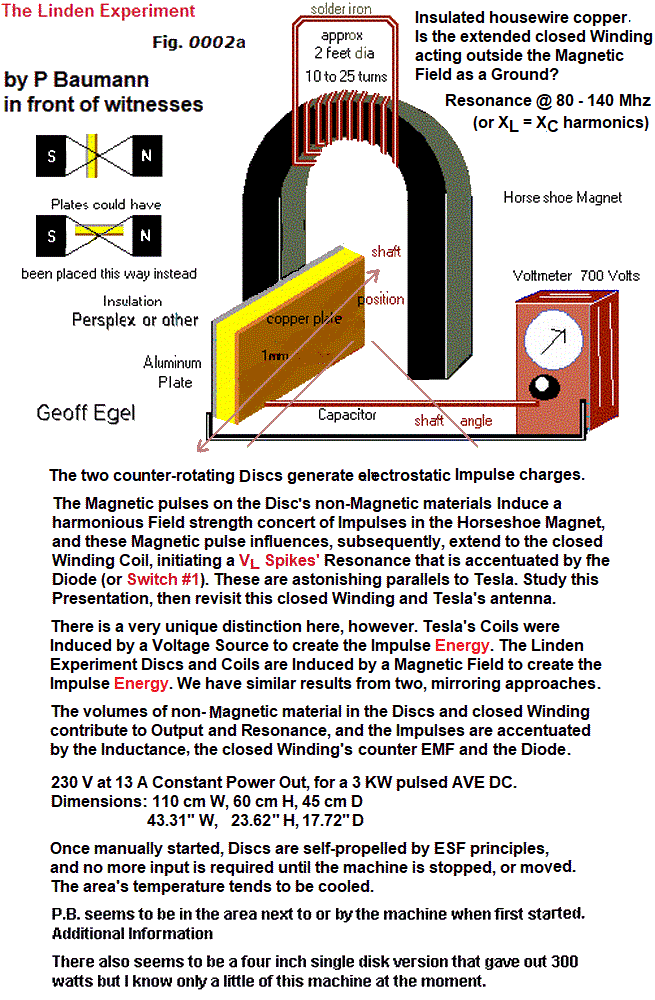
The Linden Experiment



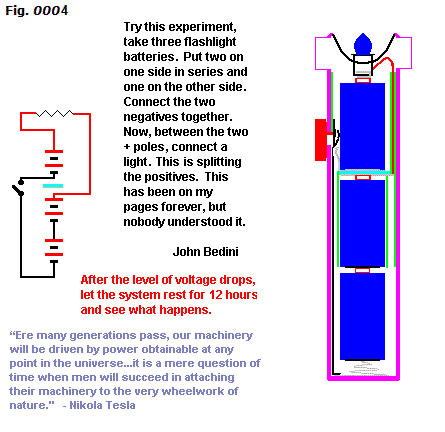
Basic
Inductive Principles
February
2, 1839 - Edmond Berger invents and is credited with the spark
plug...
January 24, 1860:The jumping spark engine is
patented...
A viable spark plug didn't come about until
1902, Gottlob Honold, an engineer working for Robert Bosch, patented
the first commercially successful spark plug....
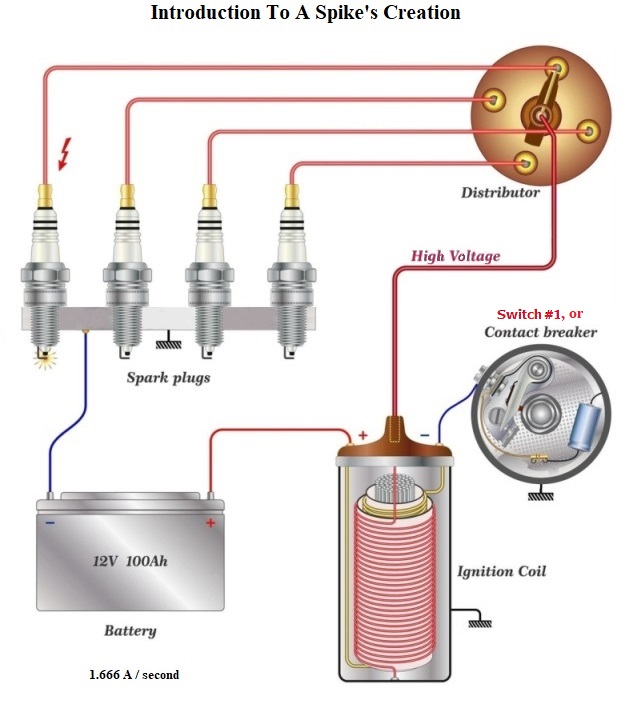
Though the printing press was a major influence
to dispel the dark age's shadowy beliefs and traditions, the power of
any specific information still encountered many challenges. The birth
and infancy of new concepts faced challenges with terms used,
record/publish accuracies, available technologies, and differing
levels of calibrations, subject comprehension, written expression,
and translational equality.
There have been many claims
establishing the Efficient Principle
this Web Site's Author references as being known, validated by
expression, recorded, and vanquished for an obscure cause. This Web
Site's Author's research on this subject reveals a fascinating
sequence of details. As early as 1842,
Daniel Davis published the Manual of
Magnetics, a compilation of scientific experiments
which establish a source that the Efficient
Principle was demonstrated by Joseph Henry (before
1842). Michael Faraday, Joseph Henry, and Gauss are
referenced by James Clerk Maxwell in a
Treatise on Electricity and Magnetism, 1873
and 1882, a two-volume
treatise encompassing the unified theory of Magnetism and
Electromagnetism, wherein the most current research was
broad and these results were unified.
Later, still,
Clemente Figuero's 1908 Patent,
Nikola Tesla's 1931 Sparks,
Edward Leedskalnin's mid 1900's research
on Magnetism, Raymond Kromrey's 1968
Patent, then John Bedini's 1984
Spikes, and others would demonstrate results of this
Efficient Principle. Not
all knew the Efficient Principle.
It
is clear to this Web Site's Author that any contradiction and
subsequent confusion were not intentional. Joseph Henry's earlier
statement about the Efficient Principle
is simply contradicted by an isolated later reference by Joseph
Henry. Aside from proving the accuracy of either published info, one
could hear or read the latest reference's implications, and believe
what they only think is true.
Tesla
had thought Energy was associated with alternations.
There are many still embracing Tesla's
initial interpretations. The
apex for what Tesla was willing to learn and accomplish did not come
of alternations. His
research compelled him to consider something beyond his previous
conclusions. His hunger to comprehend and his desire to
be certain allowed him a new perception (see this Web Site's section
titled, "Tesla's Perceptions," Part Three) and
his apex achievement reveals that the most Efficient Energy comes of
Impulses, not
alternations. This
Presentation and my Transient Phase Simulation would have no meaning
without the Impulses Tesla isolated. It
is the direct effects of how the frequencies of these chaotic Impulses influence Copper's
(non-Magnetic) Electrons, and enable the Transient Phase to deliver the greater Efficiencies.
Michael
Faraday (22 September 1791 - 25 August
1867) was an English scientist who contributed to the
study of Electromagnetism and Electrochemistry. His main discoveries
include the principles underlying Electromagnetic Induction,
Diamagnetism and Electrolysis. Although Faraday received little
formal education, as a self-made man he was one of the most
influential scientists in history.
Faraday was a pure
experimentalist and conveyed his expansive observations clearly in
simple language; his Algebraic abilities, however, did not extend
into Trigonometry. James Clerk Maxwell took the works of Faraday and
others, and meshed their various perspectives and researched findings
and then summarized their Electromagnetic phenomena as our modern
theories base in a set of equations. On Faraday's uses of lines of
Force, Maxwell wrote that they show Faraday "to have been, in
reality, a mathematician of a very high order - one from whom the
mathematicians of the future may derive valuable and fertile
methods." The SI unit of Capacitance is named the Farad, in his
honour. This course of action deeply
implies that Faraday comprehended the structural reactance of an
Inductor were being mimicked by the structure of Capacitors.

Magnetically
induced Voltage can only occur when Magnetic Field Flux is
changed rapidly.
Field Force is the
amount of push over a distance (Voltage, or “V”),
and this
Force can be present in empty space.
Field Flux is the quantity, or
effect of Force through space (Current,
or “I”),
and Field Flux cannot
exist without Electron motion.
The shape of a Coil determines
the strength, performance and other characteristics of the Coil's
Magnetic Field.
Energy storage in
an Inductor is related to the amount of the
Coil's Current.
To release Energy,
Current must be rapidly changed, (ie….. a decrease in Field
strength and a Voltage drop).
When Voltage is applied to
a non-Magnetic Inductor, there is an entire Voltage drop.
As Current begins to flow, the Magnetic Field increases until
Current reaches a Coil's maximum Energy capacity.
Turns
are related to Magnetic Field Flux
Forces.
Greater Coil area presents less
opposition to Magnetic Field Flux for
Amp-Turns
Longer paths for the Magnetic Field Flux result
in greater opposition to the formation of Amp-Turn
Flux..
Greater Magnetic Permeability
results in greater Amp-Turn Flux.
Self-induction
and High Permeability
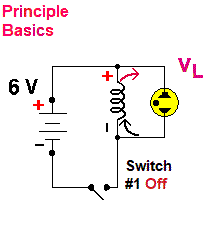
which requires a
minimum of 70 v.
A unique condition that only exists in a very
short period of Time,
(known as a Transient
Phase),
is initiated when Switch #1
is opened (or turned OFF) quickly,
and a rapid decrease in Voltage (the
change) follows.
The consistent
results of these events in a non-Magnetic structure's Electrons
is
a Transient Phase change wherein
Switch #1
initiates both an Impulse and the scheme
to
capture the preset level of induced instantaneous VL
,
which momentarily illuminates the Neon Lamp.


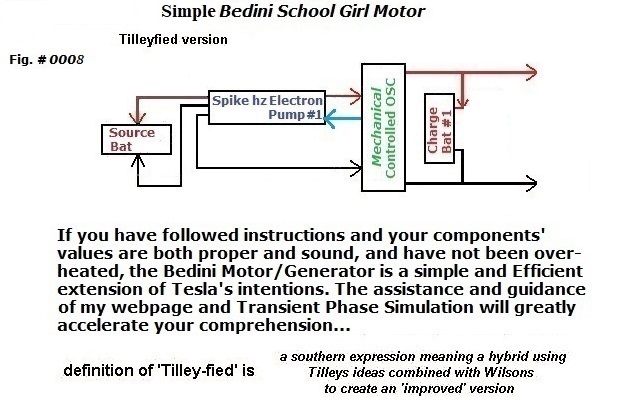
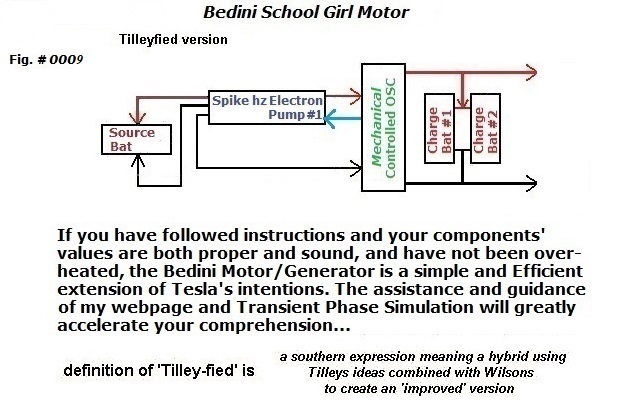
You can see by the accompanying Oscilloscope depiction
that there is a sharp Voltage Spike. For those who are unfamiliar
with Transistors, the Transistor in this schematic is acting as
Switch #1.
The VL
Spike is occurring when Switch #1 is
opened, just like portrayed with the Neon Bulb.
Consider
the potential, and the pun was intended.
When considering
the schematic below, which demonstrates Tesla's apex achievement,
also reflect on the operations of:
the Van de
Graaff Generator (early 1930's)
the Wimshurst Machine (early 1880's)
and the Linden Experiment (Linden, Switzerland).
This Presentation will delve deeper into their
similarities in the Section of this Web Site titled: "Intro
to My Very Interactive Transient Phase Simulation."
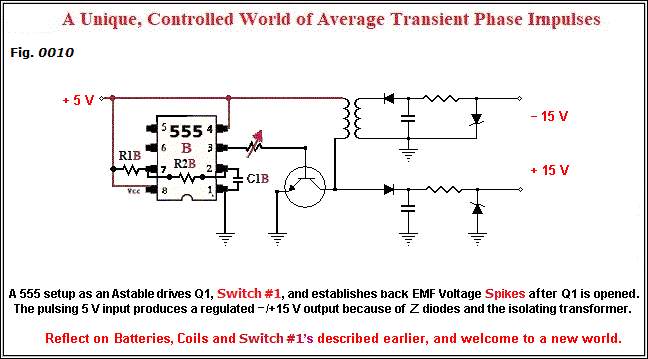
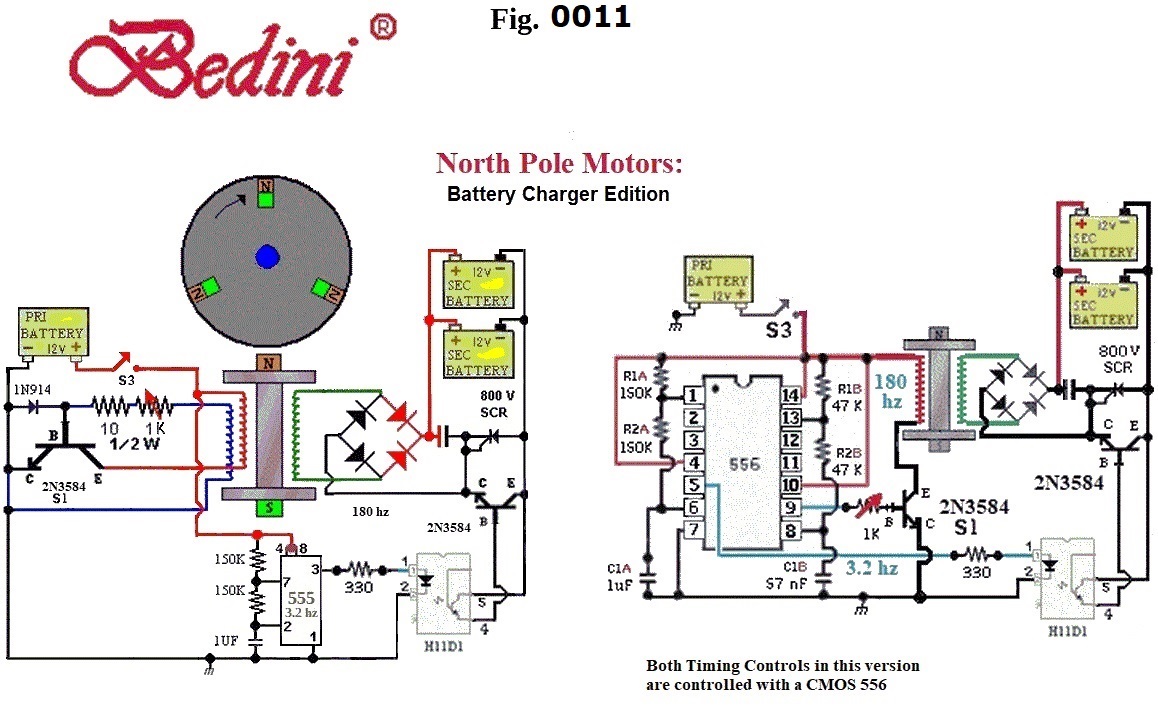



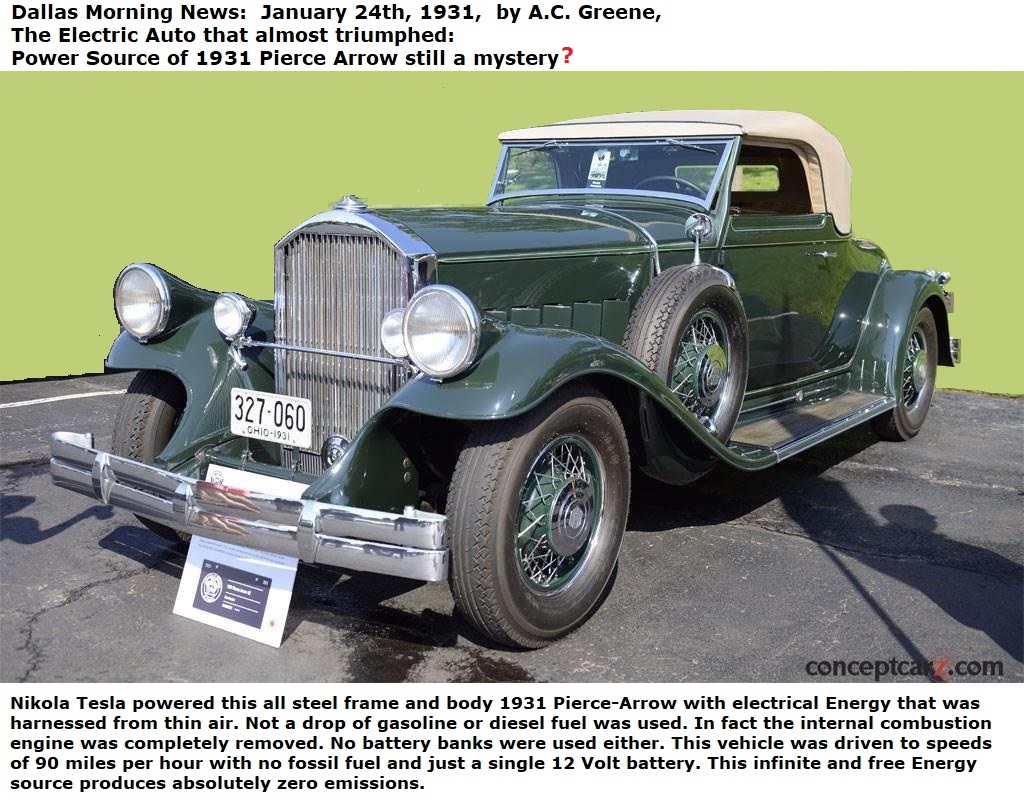

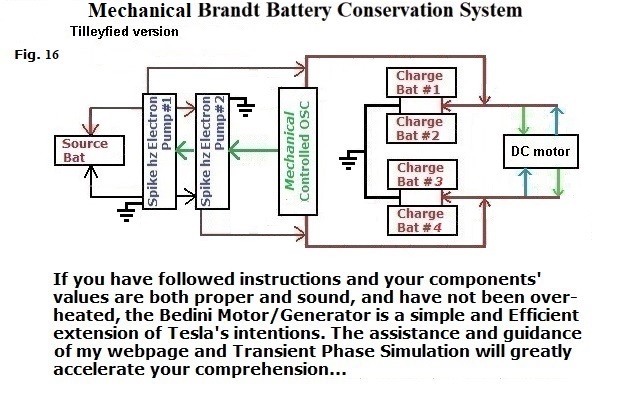
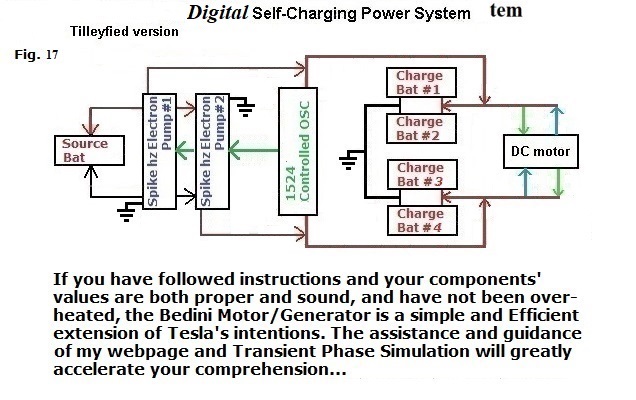
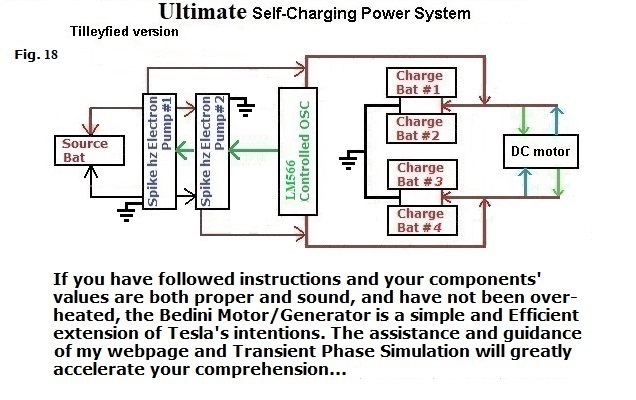


Preserve Original
File,
this Transient Phase Simulation's File can be corrupted
if your computer's resources are over-taxed.
Work only
from a backup to avoid File corruption
Return
Home